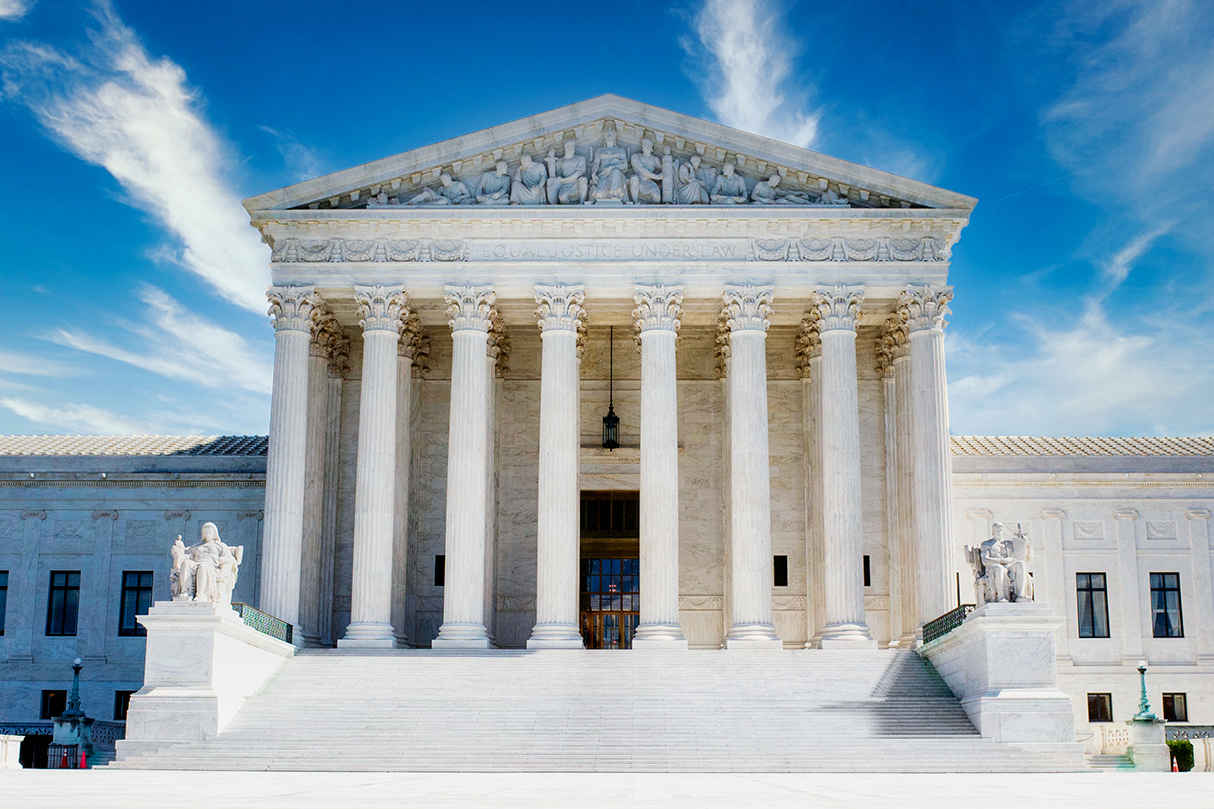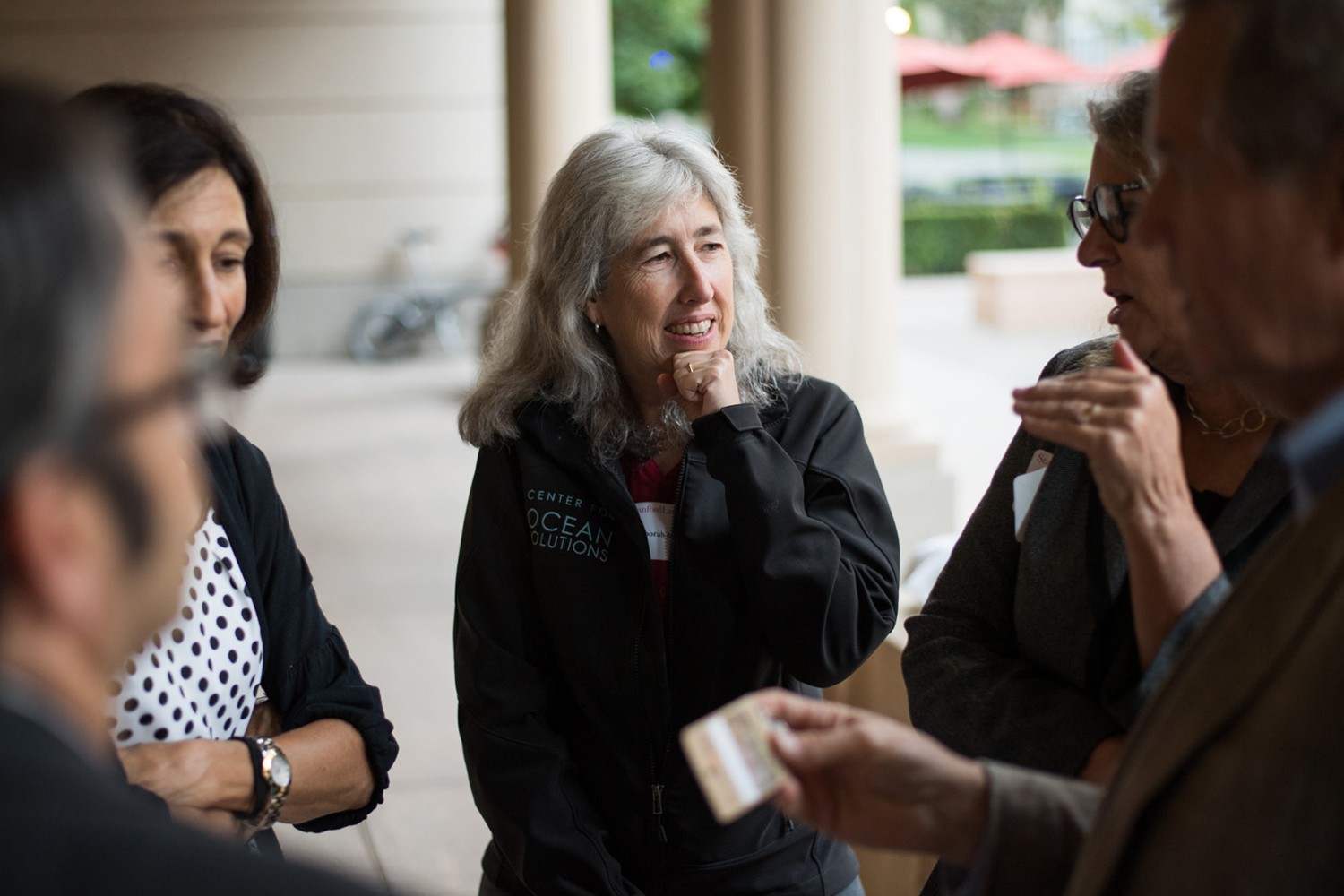
Toggle Search Search Close
Preferences Show me.
We want to provide announcements, events, leadership messages and resources that are relevant to you. Your selection is stored in a browser cookie which you can remove at any time using “Clear all personalization” below.
Clear all personalization
Close preferences Close
On Friday, June 28, the U.S. Supreme Court overturned the longstanding Chevron decision in Loper Bright Enterprises v. Raimondo. The decision overturns 40 years of precedent that has been cited in dozens of Supreme Court cases and thousands of lower court rulings. At issue is the Administrative Procedure Act and the independence of government agencies, such as the Environmental Protection Agency (EPA). Here Stanford Law Professor Deborah Sivas, an environmental law expert, discusses the case and its implications.

Can you first briefly explain the landmark Court ruling Chevron v. Natural Resources Defense Council that was overturned today?
The Chevron case, decided in 1984, applied a two-step approach for interpreting federal statutes implemented by administrative agencies. Chevron directed federal courts, in reviewing an agency’s interpretation of a statute, to determine, first, whether Congress has directly spoken to the precise statutory question at issue. If so, the intent of Congress is clear and courts should give effect to that intent. If, however, the statute is silent or ambiguous, Chevron directed courts to defer to the agency’s reading of the statutory provision as long as that interpretation was a permissible construction of the language. The doctrine established by Chevron, therefore, substantially deferred to agencies’ interpretations of the laws they administer.
Chevron has been in place for 40 years and has been cited thousands of times by both the Supreme Court and lower courts, right? What does today’s decision mean for established law?
Yes, probably tens of thousands of lower court cases over the last four decades have relied on Chervon in some fashion. The Court’s opinion today makes clear that the settled judgments in those cases are not affected – that is, the Loper Bright Enterprises ruling will not be grounds for revisiting those cases. But going forward, it does portend a sea change for any new cases that raise questions of statutory interpretation.

Professor Deborah Sivas, director of Stanford’s Environmental Law Clinic. | Courtesy Stanford Law School
How did the majority support this decision? What was their argument?
The decision itself is premised on what the majority believes is a plain text reading of the Administrative Procedure Act, which governs judicial challenges to agency actions. The majority opinion, authored by Chief Justice Roberts, essentially says that Chervon was wrongly decided in 1984 “by a bare quorum of six Justices” because it conflicts with APA’s directive that courts (not agencies) should decide “all relevant questions of law.” The majority opinion justifies today’s reversal, in part, through a lengthy discussion of the many exceptions carved out of the Chevron doctrine by the Court in recent years. Justice Roberts argues that while Chevron has remained on the books, it has become a “decaying husk” of “crumbling precedents” that warrants overturning.
Has Chevron been suffering a slow death?
Today’s decision is, really, the culmination of decades of effort to reduce the role of government in our lives, even as the problems generated by modern society become increasingly acute and increasingly complex. It is more than a bit scary to think that federal judges – many of whom are increasingly ideological and almost none of whom have specialized training beyond a JD – are now more empowered to strike down agency rules and actions they don’t like, particularly knowing that Congress seems incapable of providing an effective check on such judicial power.
How will this decision impact the work of agencies such as the EPA? And will it empower courts?
We will see how agencies adjust to the decision – they have been aware for some time that Chervon was hanging by a thread – and how the lower courts react. But today’s ruling is likely to have far-reaching impacts for the EPA, the FDA, and similar regulatory agencies, in part because the statutes which these agencies implement – the Clean Air Act, for example – are highly technical and applying them to contemporary problems like climate change requires the exercise of expert judgment. The deference which courts might have given to such expert judgments under Chevron is now largely a thing of the past.
Take climate policy: Congress has never enacted climate legislation and, given the extremely partisan nature of our current political system, is not likely to do so anytime in the near future. To address contemporary concerns, therefore, the EPA has turned largely to the Clean Air Act, which was enacted in 1970, long before climate change came onto the public radar. The Clean Air Act does not speak directly to greenhouse gas emissions or climate policy – that is, it is silent on those issues. So, the EPA has interpreted and applied various provisions of the statue to address climate issues. Courts will no longer be able to defer to the agency’s interpretation of the statute, setting the stage for the judiciary to more easily strike down climate regulations. The same is true across all federal regulatory agencies.
The Court did leave the door open for so-called Skidmore deference, which is an old New Deal-era case (enacted around the same time as the APA) that counseled courts to give some “respect” to an agency’s statutory interpretation where that interpretation is “persuasive.” But whether an agency interpretation is persuasive to a particular judge or court is obviously a very subjective standard. I suspect that courts that want to uphold an agency regulation may rely on Skidmore, and courts that disagree with an agency won’t.
You have been a leading environmental lawyer since the early days after the Chevron decision. How important is today’s decision to the work you do?
It will likely have a significant impact on the work we do, honestly in both directions. For regulatory action that aims to protect the public and the environment from harm, today’s decision will make things more difficult for agencies like the EPA and for those who advocate more protective policies. That is precisely the reason that conservative legal scholars and potential targets of such regulation have pushed, literally for decades now, to jettison Chevron.
On the other hand, there are a number of federal agencies, like the U.S. Forest Service and the Bureau of Land Management, which manage most of the federal public lands, that have been largely captured by the entities they regulate—timber companies, mining interests, etc. These agencies often seek Chevron deference for pro-development and pro-extraction rules and decisions. Many of our community partners in those circumstances might well be happy to see Chevron gone.
But on balance, my own view is that today’s decision will have an overall adverse impact on the federal government’s ability to protect the public from all kinds of harm – environmental, economic, social, etc.
Are there any legal avenues around this decision?
The decision is likely to put even more pressure on regulatory agencies to justify their interpretations, and I suspect it will make them less willing to color outside the lines of older statutes to address modern problems – precisely the effect that conservative commentators intended.
I’m curious how things will play out in the lower courts and whether today’s decision actually increases the workload and uncertainty for the federal judiciary. Recent analogs suggest that the Supreme Court’s wholesale jettison of settled precedent, for instance in the abortion and gun rights cases, can cause chaos. In both instances, the uncertainty created by those rulings has prompted a lot of new litigation, including cases moving through the system to the Supreme Court. In last week’s Rahimi decision, for instance, we saw the Court start to back-peddle on the expansive Bruen case, and there are many other Second Amendment challenges now bouncing around the courts in the hopes of overturning gun control measures after Bruen. The same trajectory may play out in the Chevron context, where lower courts must now figure out how to exercise their “independent judgment” in interpreting statutes as applied to contemporary problems that Congress did not expressly address in a given law. I don’t think this is the last we will see of the issue before the Supreme Court.
Is there anything else you’d like to add about this decision and its impact on environmental issues going forward?
The slow fall of Chevron – today’s opinion says that the Supreme Court has not relied on the doctrine since 2016 and, as a practitioner, I know that the Department of Justice basically stopped using it during the Trump years – has been accompanied by the rise of the so-called “major questions doctrine.” That doctrine, to which the Supreme Court gave its official blessing in the 2022 West Virginia decision striking down EPA’s Clean Power Plan for reducing carbon emissions from power plants, provides that agency rules that may have broad economic and political significance must be authorized by a clear statement from Congress. Virtually any new regulation to address pollution or financial institutions or the like can probably satisfy that criterion, meaning that most of today’s rulemakings are at risk. And indeed, regulated parties are raising “major questions doctrine” challenges in case after case after case.
The arrival of the major questions doctrine and the simultaneous demise of Chevron deference go hand-in-hand to arrogate enormous power to the federal judiciary to decide policy questions for the rest of us. When I went to law school, the most conservative legal scholars railed against just such creep of judicial policymaking. Now they basically embrace it.
Deborah A. Sivas is the Luke W. Cole Professor of Environmental Law at Stanford Law School. A leading environmental litigator, Sivas is the founding director of the highly regarded Environmental Law Clinic, in which students provide legal counsel to dozens of national, regional, and grassroots nonprofit organizations on a variety of environmental issues. Sivas’s litigation successes include challenging the Bush administration’s gas mileage standards for SUVs and light trucks and holding the U.S. Environmental Protection Agency accountable for regulating the discharge of invasive species in ship ballast water. Her current research is focused on the interaction of law and science in the arena of climate change and coastal/marine policy and the ability of the public to hold policymakers accountable. She is also the director of Stanford Law School’s Environmental and Natural Resources Law and Policy Program; a senior fellow at Stanford Woods Institute for the Environment; affiliated researcher at the Center for Ocean Solutions; faculty advisor at the Emmett Interdisciplinary Program in Environment and Resources; and a professor at the Doerr School of Sustainability.